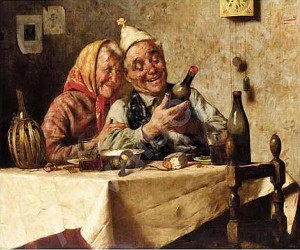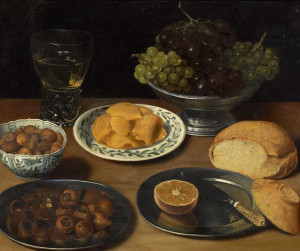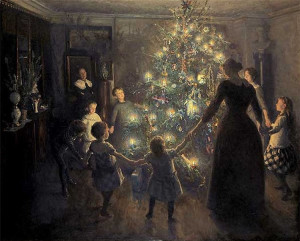SECOND DAY of CHRISTMAS:
St. John’s Day
The Second Day of Christmas is given to St. John the Evangelist. He was one of the disciples of Jesus and the only one who lived to a ripe old age. The rest were all martyred for their faith. John certainly had a few close calls. The most famous attempt on his life involved poisoned wine, but he drank the wine and it had no effect on him. For this reason, wine is central to the Second Day of Christmas, and bottles of wine are typically blessed in churches on this day, a tradition especially in Europe. This blessed wine is reserved through the year and given as a healing tonic to those who are ill. But the blessed St. John’s wine is also thought to have a better flavor and to even impart better flavor in wine that is stored in its vicinity.
Last night, for St. Stephen’s Day, Italians drank mulled wine and ate roasted chestnuts, and this continues tonight for St. John. I was not fond of chestnuts when I was a boy, but now I love them and I imagine them to be amongst the foods of the gods. They are part of the warmth of home and hearty earthiness that I think of when I think of dark winter. And any night that calls for mulled wine is okay by me, too.
Mulled wine is easy enough to make. Here’s our recipe: Pour a bottle of good red wine into a stainless steel pot and set it on the stove over medium heat. Add some mulling spices (we sell some wonderful mulling spices at the Convivio Bookworks website that are from the Sabbathday Lake Shaker Community in Maine… they call it Mulled Cider Mix but it’s just as good in wine), and sugar. Start with a teaspoon or two and add more to taste. Sometimes mulled wine is too sweet for my taste… and while you can always add more sugar, you can’t take it away once it’s in. So I add the sugar gradually, always tasting as I go. Heat to allow the spicy flavors to infuse the wine. Strain before pouring into cups.
Gather good company if you can for a traditional toast to good health and a good Christmastide. Should the company be small that’s okay. Just one or two of you is still good reason to raise a toast to good health and a good Christmastide and to ask for the blessing of St. John upon your wine throughout the year.
Image: Le Marchand de Vin et Son Épouse by Pompeo Massani. Oil on canvas, c.1900. [Public domain via Wikimedia Commons.]


